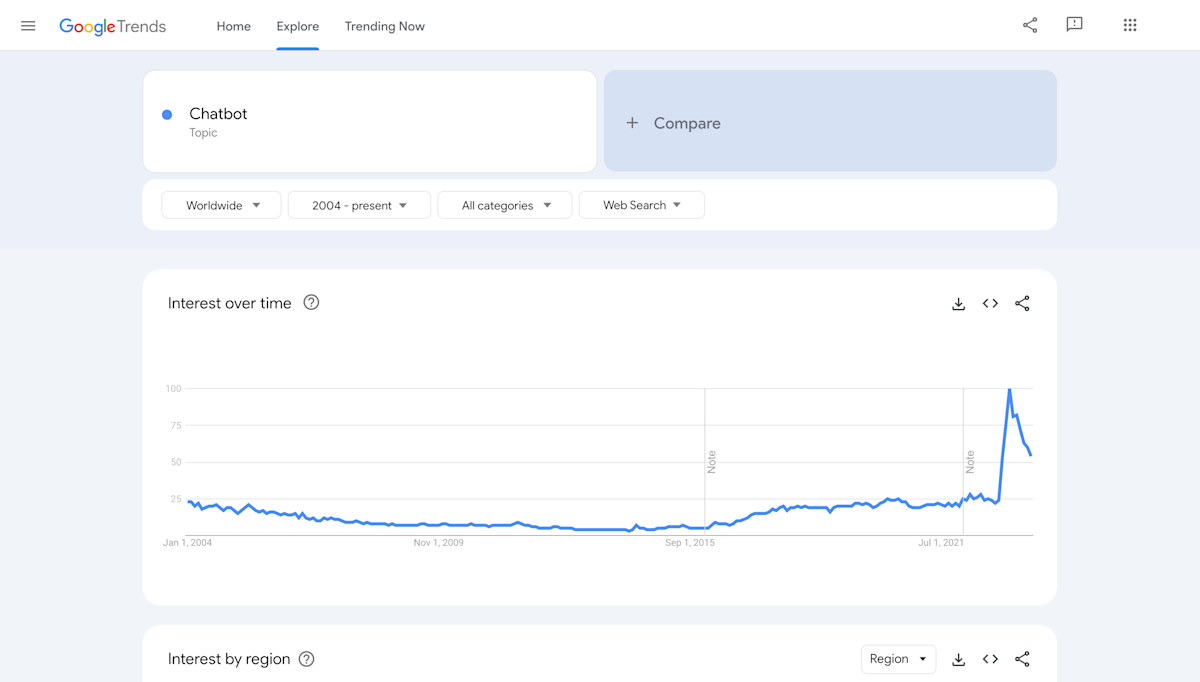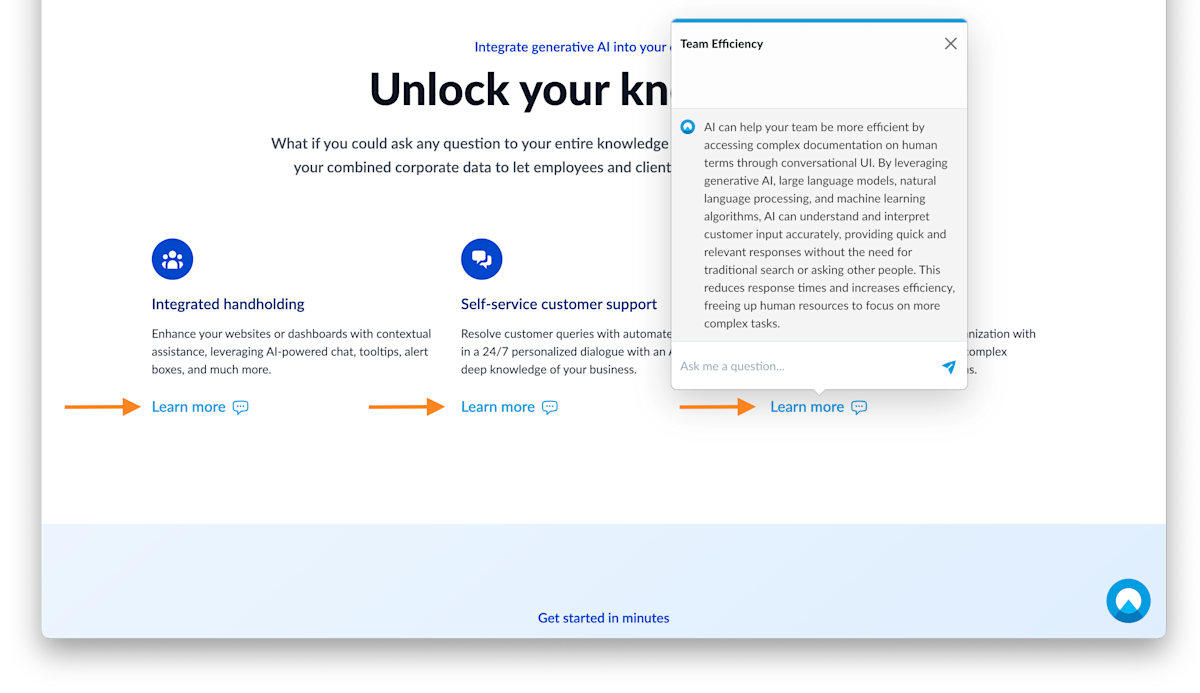Chatbots have been around for a long time and in all honesty, they don’t have the best track record. This can explain why interest remained low over the years until… The recent, speedy rise of ChatGPT and similar technologies. A quick look at Google Trends shows us that interest in chatbots quadrupled in the last year.

As with any trend in tech, many companies are eager to jump at the opportunity. Now, the technology is better and the barrier to entry has been lowered. It’s a lot easier for anyone to make a chatbot and more and more are popping up every day. You could even build your own chatbot. But…
Building a chatbot may have gotten easier however building a good chatbot experience is still a lot of work and requires nuance and many considerations. Many companies do some experimenting first, but they find that the devil sits in the details before they can launch and maintain something that is production-ready and more importantly compliant with regulations. That is our added value.
In this post we will take a look at barriers to a good chatbot experience and how we solve them.
What happens in the chatbot
The first thing that can go wrong with a chatbot is of course bad or wrong responses, potentially caused by messages that were misinterpreted by the bot.
There are different types of chatbots. For example, you can have a rule-based chatbot where the user can only select from pre-defined options to ask their question or to get help. There is less room for error. But, it is not a very flexible option and can be frustrating for the end user. You also run the risk of your users not being able to find what they are looking for or having to click around a lot before they eventually do.
AI chatbots are another option. They have actually been around for a while already but so far they haven’t always been great either. We’ve had to adapt instead and form our questions in ways we hope the bot will understand. This includes using keywords, command phrases, and the like.
There is hope though. With Unless, you can train your AI to become an expert in your business within seconds, without needing any technical knowledge. Then using the conversational UI components of Unless, you can let your users navigate your websites, products, or dashboards with the help of human-like assistants. You can even select a persona for your AI.
Your interaction is contained within a rectangle
What do you picture when you hear the word chatbot? Chances are it’s either a bubble or a rectangle fixed on the bottom right corner of a page. You open up the chat, ask a question or select an option and start having a conversation, contained within that box.
In the case of Unless however, you can start a conversation anywhere in your product! Keep in mind, if people have a question about your product, some of them might take the time to ask it but many are likely to keep on scrolling, with an unanswered question on their mind.

However, by strategically placing conversation starters across your websites and dashboards, you can preempt this. You can also add follow-up questions that they can just click on instead of maybe typing it out themselves, to remove any potential friction and help your customers along their journey.

This is made possible by our component library with 120+ templates to choose from. These templates include bars, pop-ups, sideboxes, popovers, and multi-step components. They can be overlays or inserted anywhere on a page with a simple click. Plus, you can even compose your own templates using our component framework and API or making a request to our team.
The chatbot takes you away from the experience
Often if you ask a question that requires more information, chatbots tend to suggest links you can go to. Here are some articles about X subject. Did that answer your question? This isn’t giving you an answer, it’s telling you where to look.
Now, sometimes this might be necessary for subjects that are very specific or nuanced. However, the default approach shouldn’t be to take you out of your current flow and give you homework on top of it.
With Unless, the answers are provided within the conversation by default. Occasionally, a link might be provided, for example if the user asked for it. But in most cases, questions are answered within the conversation.
Additionally, the conversations meet the user where they are. Since you are not limited to a rectangle on the corner of a screen, you can place components along the journey of a user. Different things can be highlighted in a product and users can for example receive a guided onboarding with the use of multi-step components.
Conclusion
The resurgence of interest in chatbots is a testament to their potential when approached correctly. While ease of development has improved, crafting a successful chatbot experience demands meticulous attention to detail, nuanced understanding, and a commitment to regulatory compliance.
Unless emerges as a promising solution, allowing businesses to deploy context-aware AI-driven solutions, seamlessly integrated throughout their platforms. By leveraging innovative components and reimagining the traditional chatbot interface, Unless paves the way for engaging, user-centric interactions that redefine the chatbot landscape and dispel the notion that they must inevitably fall short of expectations.






